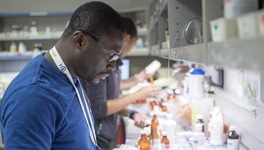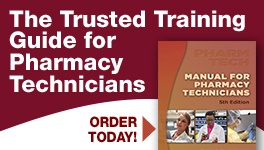Primary Intended Outcome(s):
- Improve medication safety by assisting pharmacists to collect up-to-date prior-to-admission medication lists for patient admitted to the hospital.
- Update and clarify allergy information in patients' records in an electronic health record.
- To optimize the medication reconciliation process and decrease the number of med errors due to incomplete or inaccurate information.
Associated with the following PPMI Recommendation or ASHP Strategic Plan Goals:
- Initiation of medication reconciliation including obtaining and documenting patients' medication information for pharmacists' review.
- Reviewing patient charts to identify medication allergies that require pharmacist follow up.
Site Description:
MultiCare Health System is a private, non-profit, acute, integrated, tertiary medical center located in Tacoma, Washington and surrounding areas. The system includes Tacoma General Hospital, Mary Bridge Children's Hospital, Good Samaritan Hospital, Allenmore Hospital, and Auburn Medical Center, numerous outpatient specialty centers, primary care clinics and urgent care clinics. Tacoma General Hospital is the flagship hospital of the health system and has over 400 adult-medical beds.
Tacoma General Hospital has 25 full-time pharmacist, 6 part-time pharmacists, and 3 on-call pharmacists on the inpatient side. There are 25 full-time technicians, 8 part-time technicians (0.6-0.8 FTE), and 6 on-call technicians. We also have 5 pharmacy interns.
Advanced Role Description:
Overview of Discharge Pharmacy Technician Role:
In 2000, the direct cost of drug-related morbidity and mortality attributed to hospital admissions exceeded $121 billion (Agency for Healthcare Research and Quality). Literature indicates medication lists collected for hospital admission contain risky discrepancies; up to 67% of inpatients have at least one unexplained discrepancy in their prescription medication history, which our audits substantiate (Schnipper JL, 2013). Effective medication reconciliation is necessary to optimize patient safety.
In April of 2010, a study was conducted that focused on medication reconciliation list activities being completed by nursing: recording the medication list, chart reviews, allergy documentation and the rate of completion. These findings were compared to the medication reconciliation activities completed by pharmacy technicians. Pharmacy technicians displayed the ability to take a more accurate medication list, better completion rates and the ability to focus on a deeper level of communication with the patients regarding their medications, such as how the patient takes their medication vs. how the medicine was prescribed. Pharmacy technicians were also able to communicate with the patient and explore reasons why they are not taking their medications as prescribed. For example, was the reason behind the non- adherence due to side effects, misunderstanding of doctors' orders, the cost of medications or because they have changed to another medication.
The Joint Commission standards were becoming harder to meet within 24 hours of admission, which added additional pressure to the nursing staff. The Emergency Department (ED) was especially problematic and thus the ED was chosen to pilot the pharmacy technician program. The hospital has seen great success with the ED Technician and the program has grown. As part of a pharmacy resident project, emergency services were expanded to include a satellite office.
Currently, there is a day shift ED Technician, a day shift Medication Reconciliation Technician, and an evening ED Technician. While all three of these shifts involve medication reconciliation, the day shift Medication Reconciliation Technician focuses solely on medication reconciliation while the ED Technician also has other duties in the ED. For the day shift Medication Reconciliation Technician, a list is created, sorted by indicators on the patients' electronic medical record that notifies the tech which patients require medication reconciliation and follow-ups on medication reconciliation records that have already been started. The Technician calls the floor pharmacists to determine how urgent any particular medication reconciliation need is compared to others that must be completed. The Technician contacts skilled nursing facilities and outpatient pharmacies to obtain medication administration records and recent refill lists are faxed to the hospital so that that the medication information can be entered or updated in our system. The Technician then interviews the patient regarding last doses, i possible. For intubated patients or patients who are cognitively impaired, sometimes the last doses would just be described as unknown.
In addition to medication reconciliation, the ED Technician prepares sterile compounds in the ED satellite office, which has an IV hood, fills the automated dispensing system, and manages floorstock. In addition, the ED Technicians may assist at pediatric codes in the ED to help dilute and draw up IV medications.
Nurses still perform medication reconciliation lists in other areas of the hospital at this time.
Revenue & Expense Parameters (abbreviated financials):
Personnel costs for 3.5 FTE pharmacy technicians were $141,000. The return on investment was $2.3 million dollars. The IT and other infrastructure expenses were not applicable, since the nursing staff was previously performing these duties.
Training and/or Education Requirements:
A training manual was created for the Medication Reconciliation Technicians. Additionally, one-on-one training, in- services, and presentations with CE credits were also included in the training program. Please click for the training manual.
Outcome Measures:
- Thanks to teamwork and extensive education continuously provided to prescribers, pharmacists, pharmacy technicians, and nurses, chart review audits showed an improvement in home medication lists review rate from 65% in April 2011 to 100% in October 2013 (p<0.0001). Medication reconciliation by admitting physicians conducted within 24 hours of admission has also improved from 30.5% to 88% (p<0.0001). In this time frame, the rate of adverse medication events has decreased by more than 25% while medication harm events dropped by almost 50%.
- Further standardize how medication reconciliation is conducted so that levels of documentation of findings and extent to which prior-to-admission medication lists are updated so as to minimize inconsistencies in how ambiguous situations are approached.
Lessons Learned:
- Quality of work on medication reconciliation heavily depends on the technician and the individual's motivation. The best technicians are much more knowledgeable and continuously challenge themselves to learn more. It is critical to select the right technicians for this work, especially since these technicians must speak with patients. The department has developed a standardized approach to medication reconciliation; however, there is definitely variability in how some more ambiguous situations are handled. This variability is true not only for technicians but also for the pharmacists.
- Training in the area of communication skills with patients is imperative. Just because someone likes to talk, does not mean they will be good at communicating with patients.


